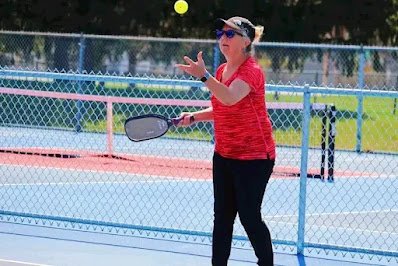5 Legal Pickleball Serves That Will Tear Your Opponent Apart
Pickleball, a fast-growing sport that combines elements of tennis, badminton, and table tennis, has taken the world by storm. A crucial aspect of any successful pickleball strategy is the serve. A well-executed serve can give you a significant advantage over your opponent, setting the stage for a strong rally or even an outright point.
In this article we will explore five legal pickleball serves that will tear your opponents apart. We'll discuss the fundamentals, techniques, and tactics behind these serves, so you can integrate them into your game and dominate on the court.
 |
| 5 Legal Pickleball Serves That Will Tear Your Opponent Apart |
#1 - Topspin Serve
A topspin serve is when you hit the ball with a lot of spin and speed. This makes the ball curve down and bounce forward instead of bouncing up. You can aim for your opponent's forehand or backhand side (we recommend changing it up), but the most important thing is to hit the ball deep, as close to their baseline as possible.
This will challenge your opponent because most people stand just behind the baseline when they are waiting for the serve. But if you can hit the ball near the baseline consistently, they will have to move back further. This will make it harder for them to move forward on their next shots. Which can give you an advantage.
These serves are not easy to master at first because they require a lot of speed and control. But focus on hitting the ball deep first, then increase the speed as you get better at the topspin serve technique.
#2 - High Topspin Serve
A high topspin serve is similar to the topspin serve, but instead of hitting the ball fast and low, you hit it high and arched, well above the net.
To do this serve, you want to try and get under the ball more when you hit it. You will have your paddle face more open to the sky and swing up and through the ball with it. You still want to hit the ball deep and with some speed, but not as fast as the topspin serve. This is a good serve to mix in once in a while if you have been hitting fast serves in a row.
A high topspin serve will force your opponent to have to hit the ball at a very high point, which can be very hard to do. They might miss the ball or hit it out of bounds.
#3 - The Slow High Lob Serve
This serve is especially useful against players who like to hit the ball hard back at you on the return of serve. A slow and high lob serve will make your opponent have to generate much more speed on their return than what they are used to. So instead of using the ball's speed, they have to adjust quickly and create their own speed.
This is a great change of pace serve and can surprise your opponents.
To do this serve, you will really want to get your paddle face under the ball, which means you will need to bend your knees more. And your goal is to hit the ball high and deep. Speed should be relaxed and slow. You almost want them to be annoyed that the ball is taking so long to get to them.
#4 - Short Angle Topspin Serve
We have already talked about the benefit of serving the ball deep to your opponent. This serve is perfect when you notice they are standing far behind the baseline because it makes them run forward and out of the court to try and return it.
Your goal with the short angle topspin serve is to hit it, with speed, right in the corner of your opponent's box, just past the kitchen line. This serve requires a lot of practice and skill, but once you master it, it can really ruin your opponents and give you some easy points off the serve. If you are behind by several points in the game, you may not want to try this serve because it is more risky than the others. But if you are ahead or going for the win, go for it!
#5 - Sidespin/Slice Serve
When you are on the odd side of the court (the left side if you are a right-handed server), this can be a great serve to change things up with. What you want to do is swing the paddle across your body to create a side spin on the ball. This side spin should make the ball bounce away from your opponent, pushing them off the court and putting them in a bad return position.
Your aim is the corner or sideline, and you want to hit the ball with some speed, making it hard to return.
Even if they can return it, this serve puts them in a tough position on the next shot. When you practice this shot, try hitting it short or soft to mix it up even more.
There you have it; five serves to make your opponents go nuts.


.jpg)


